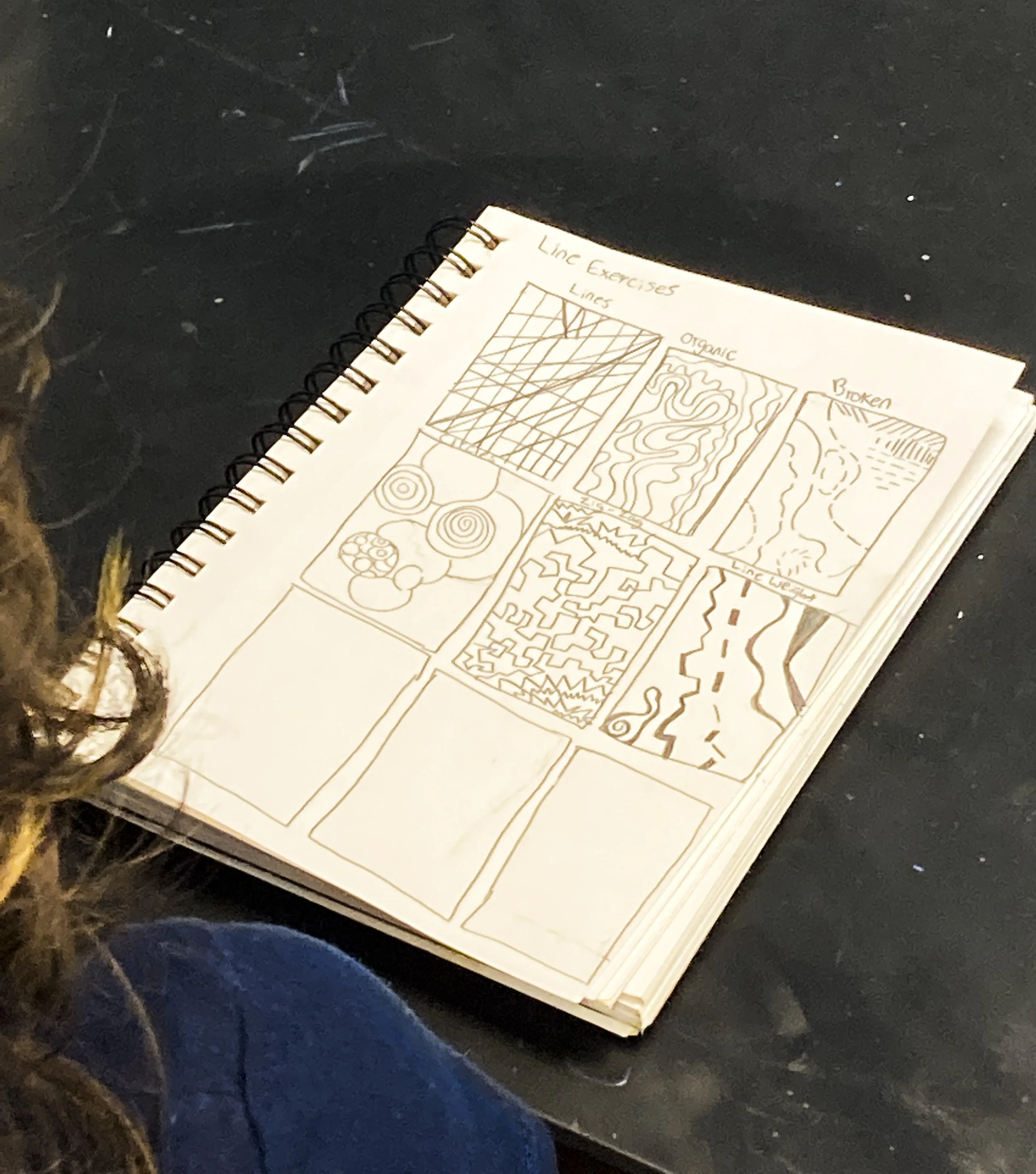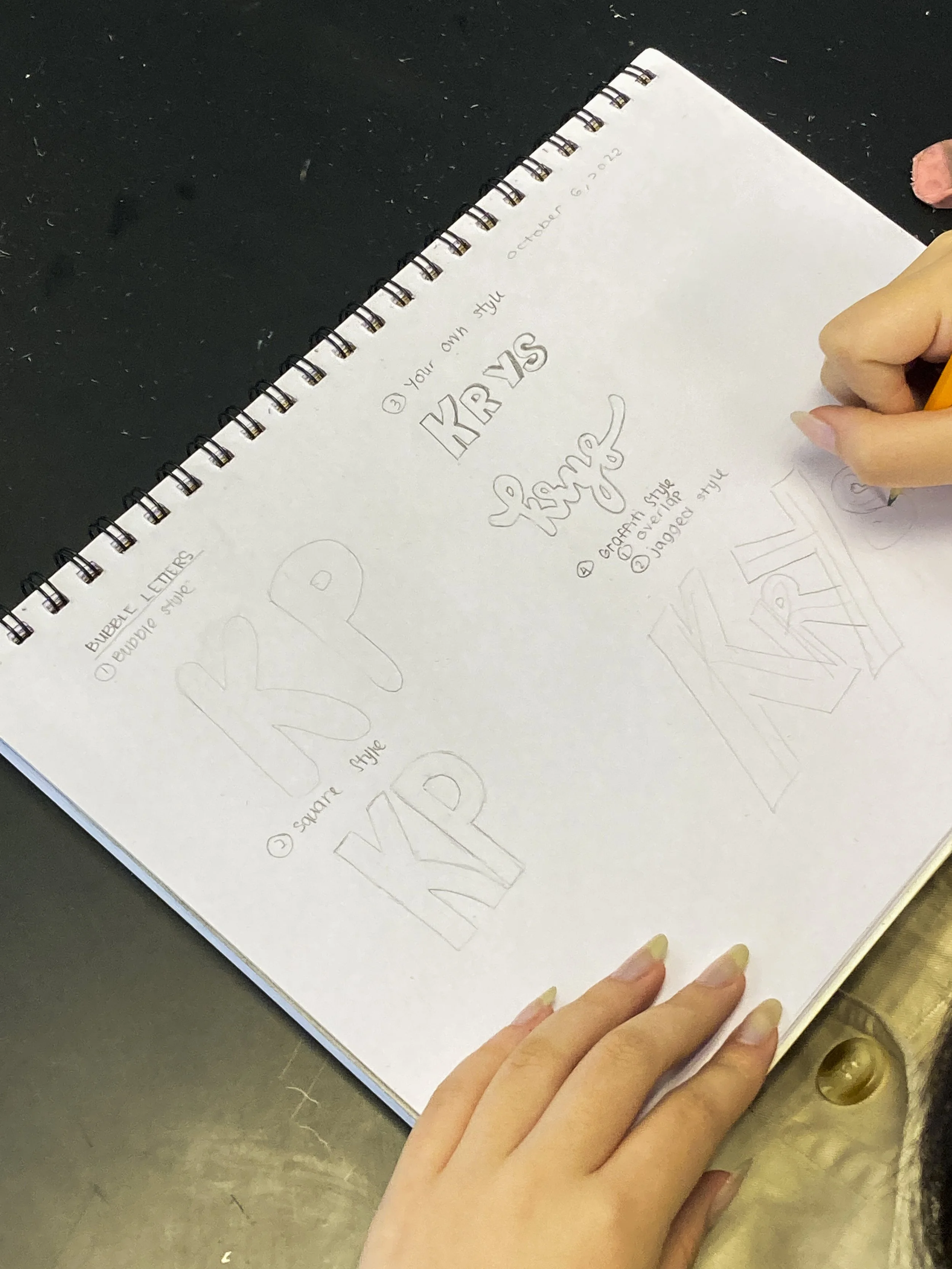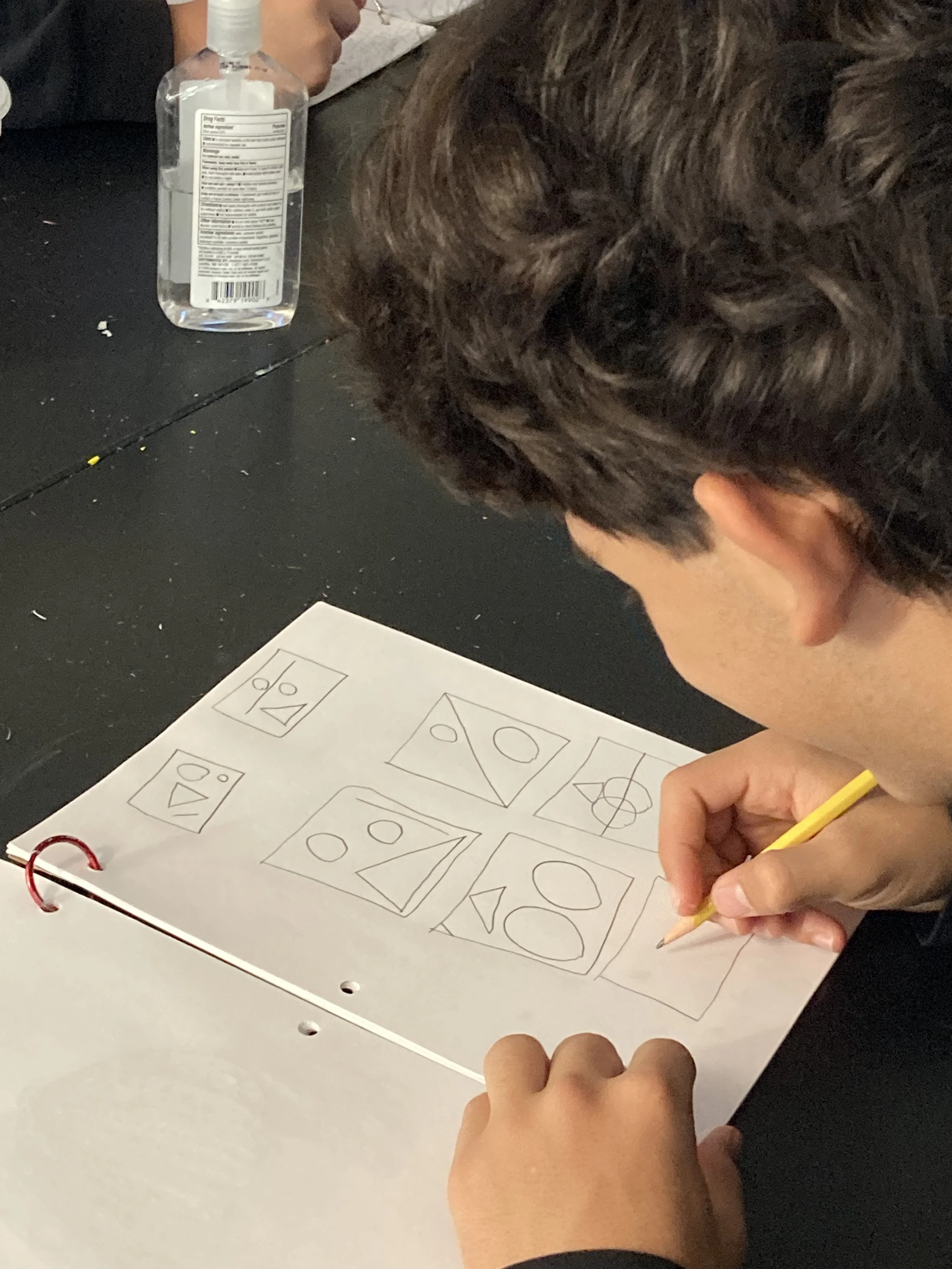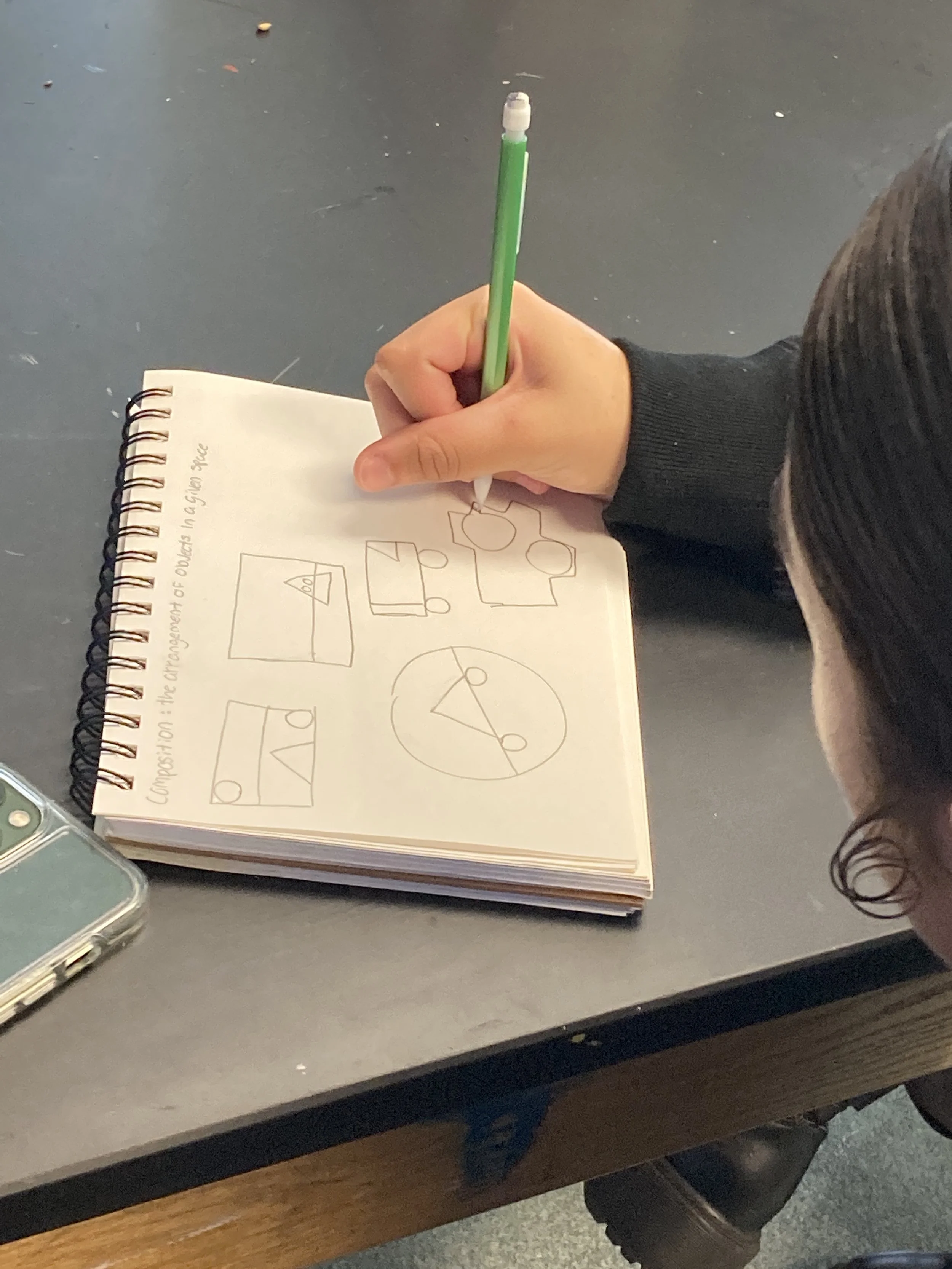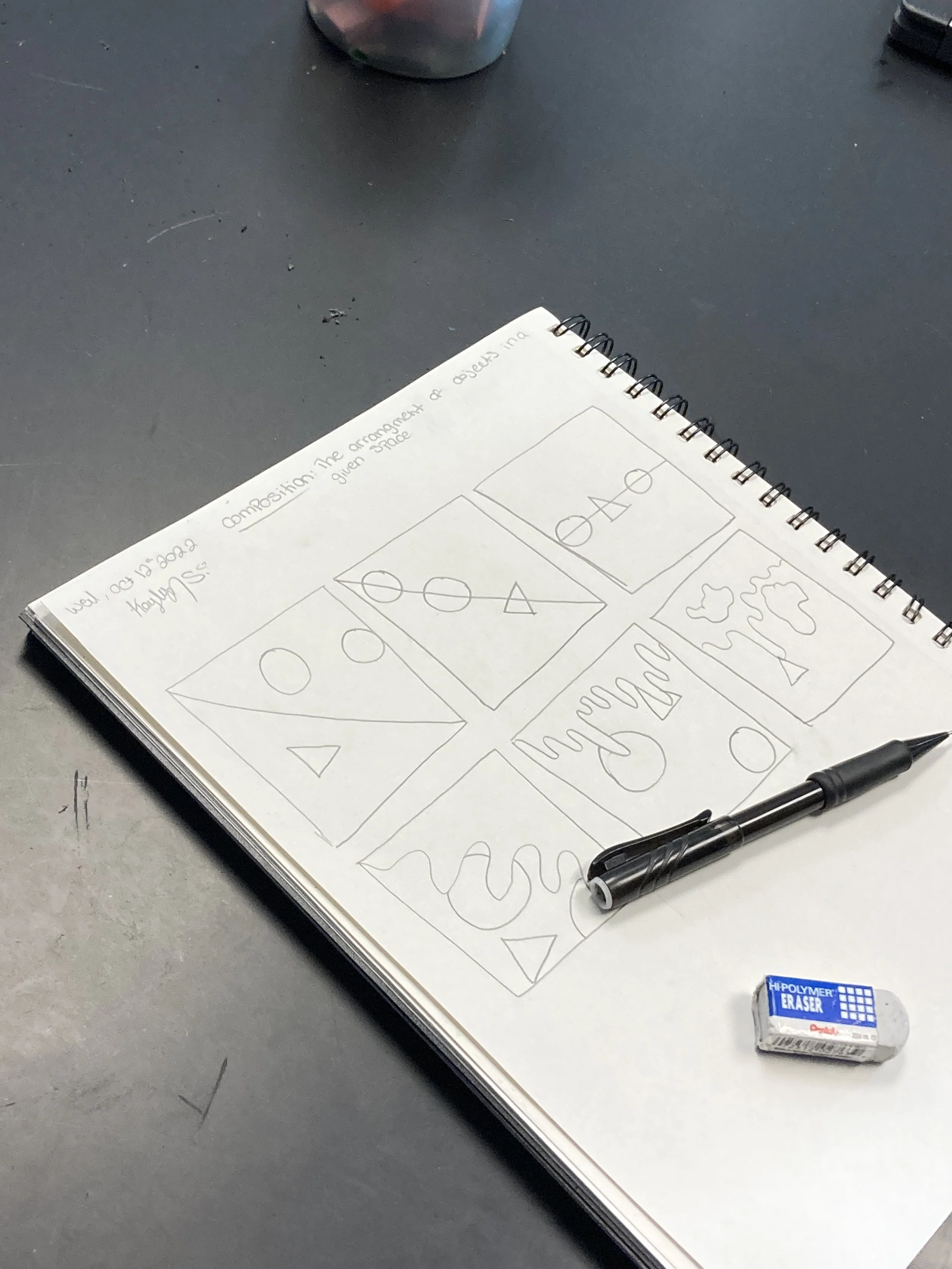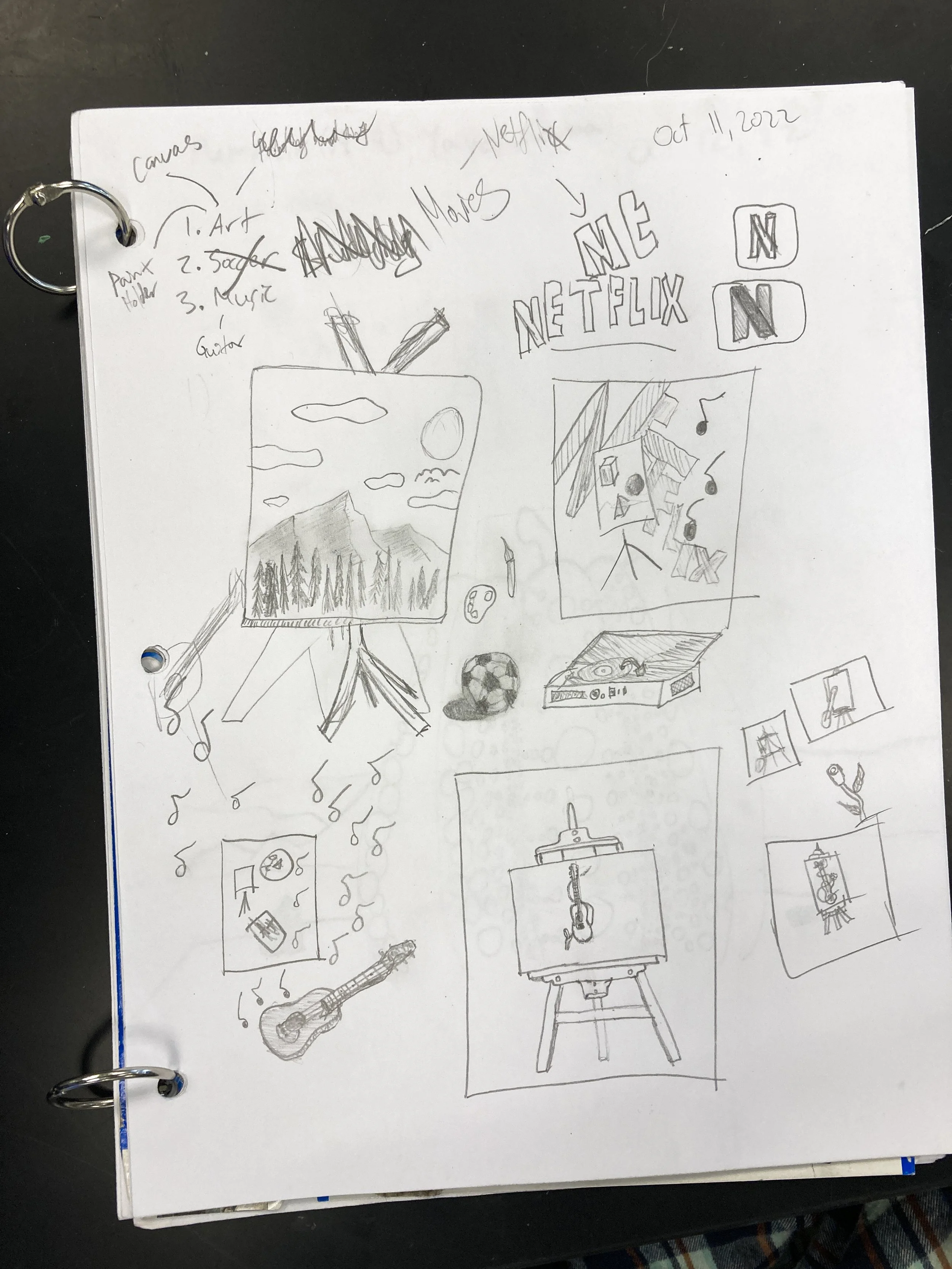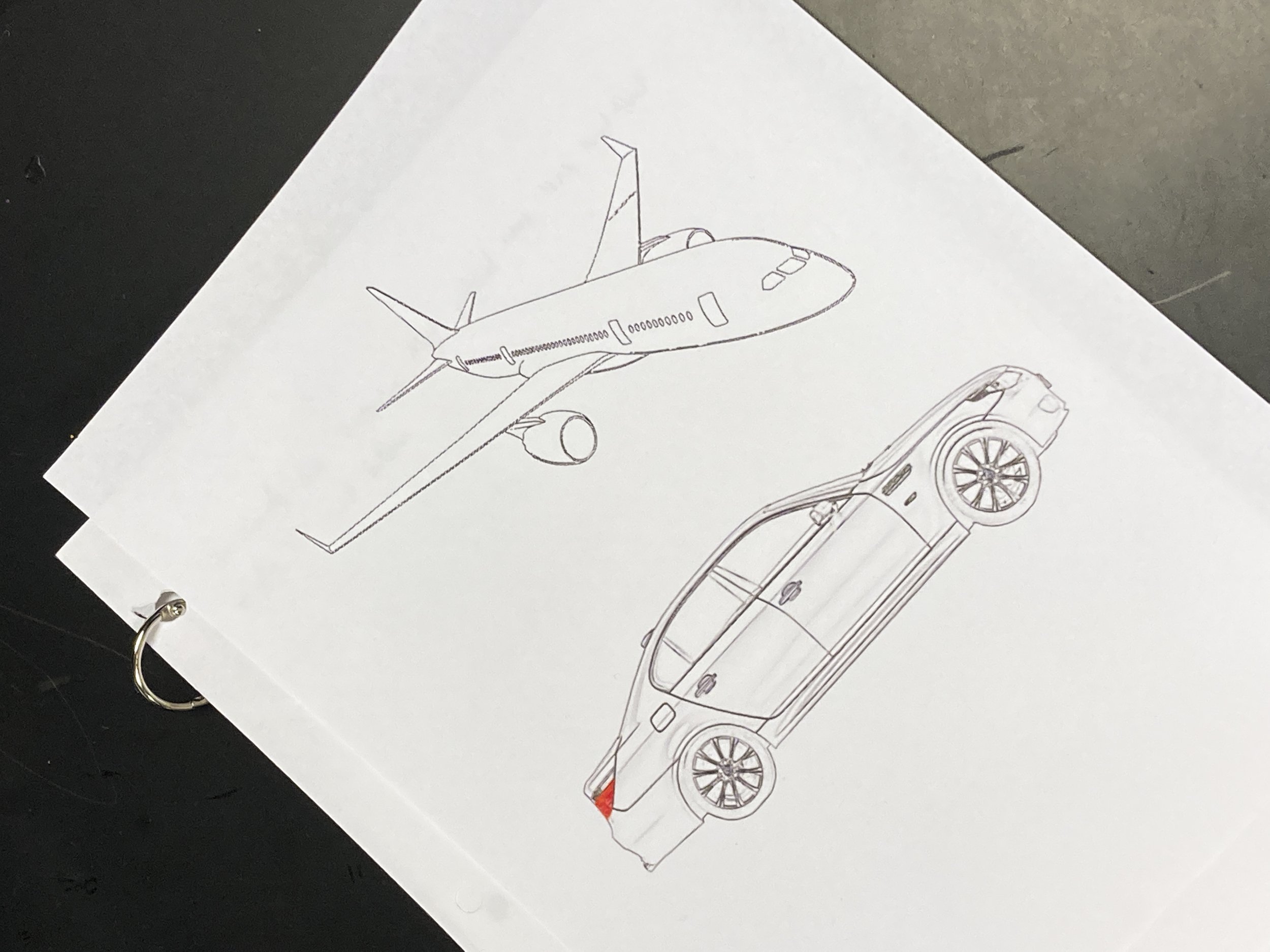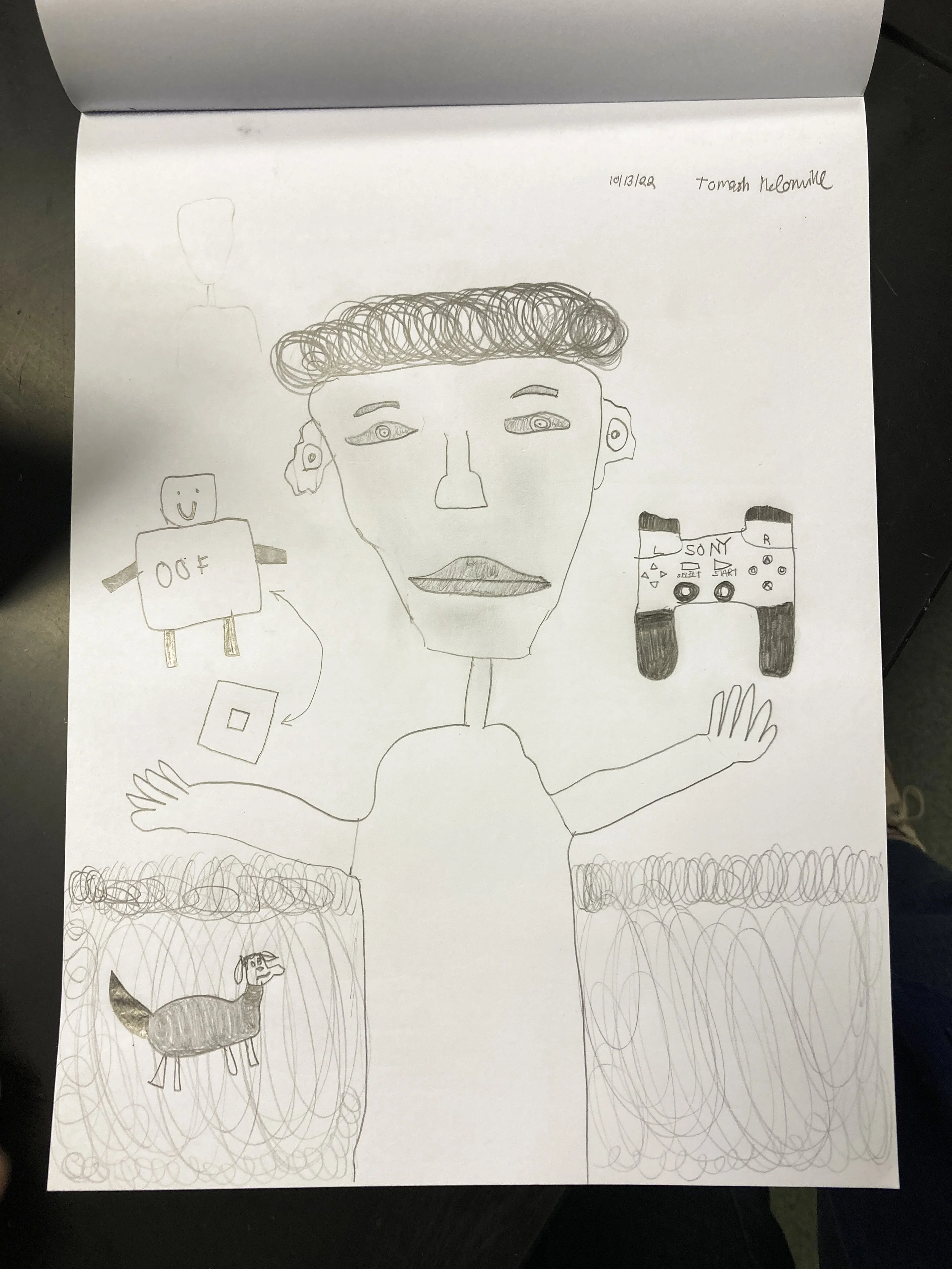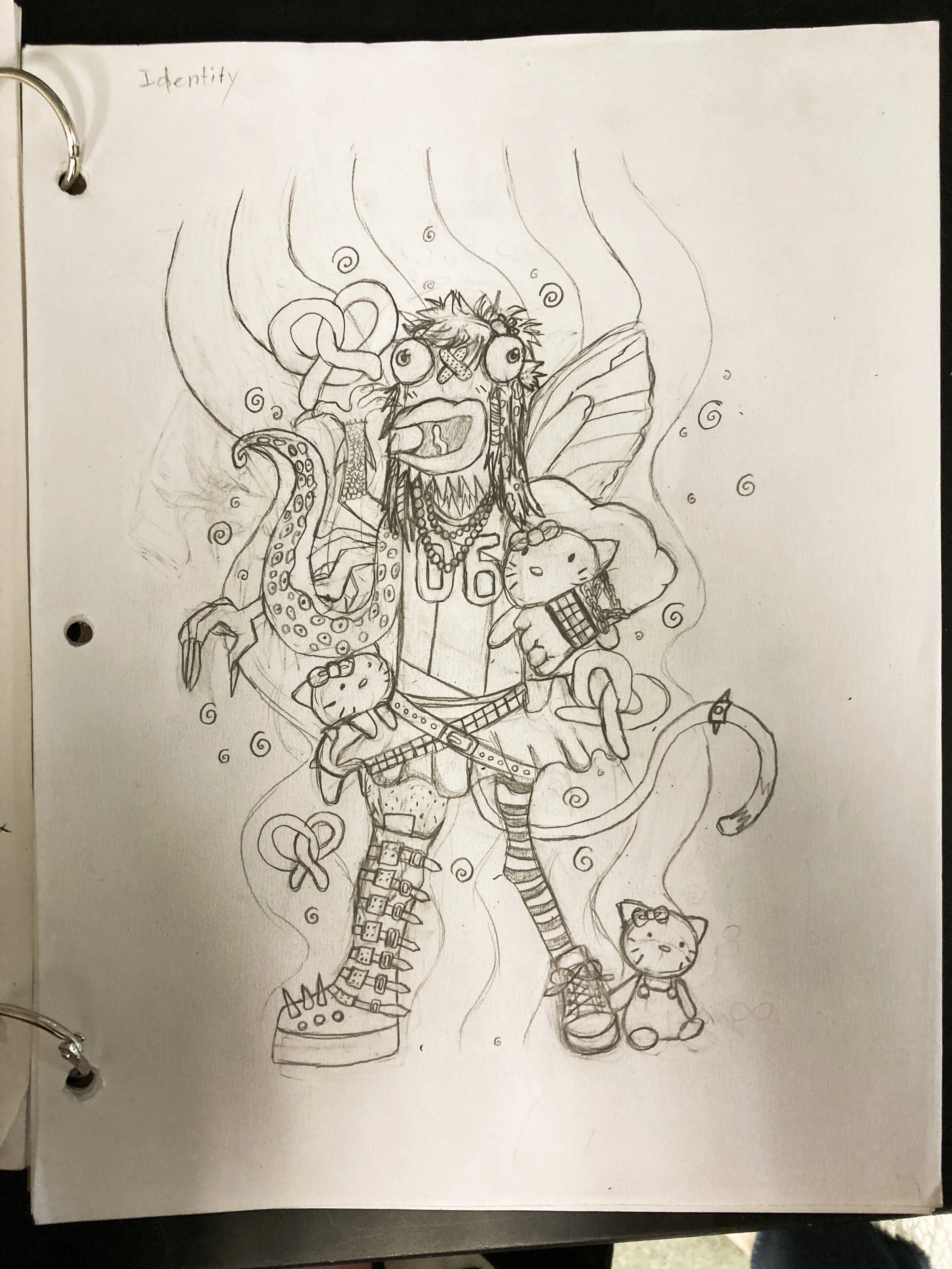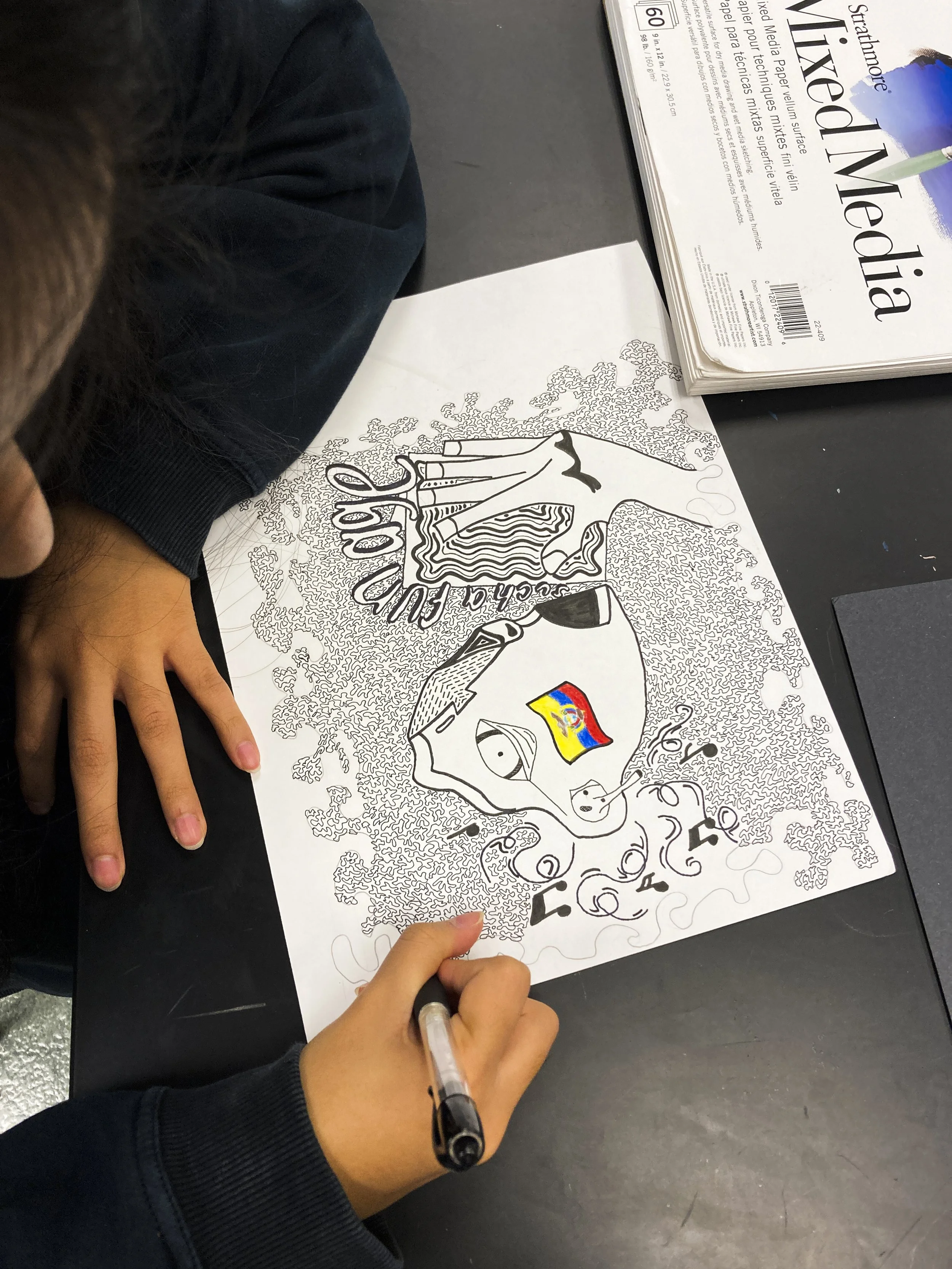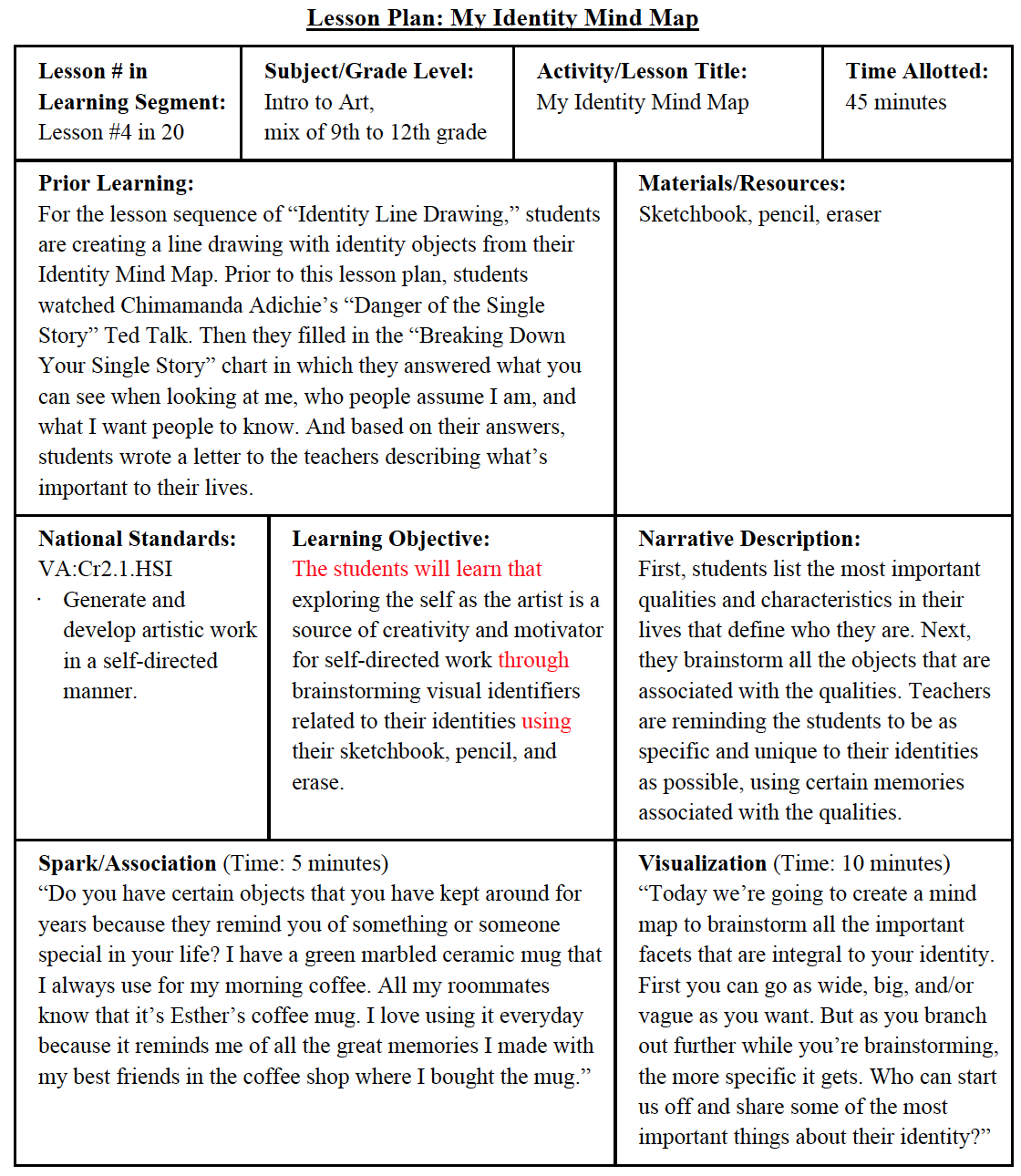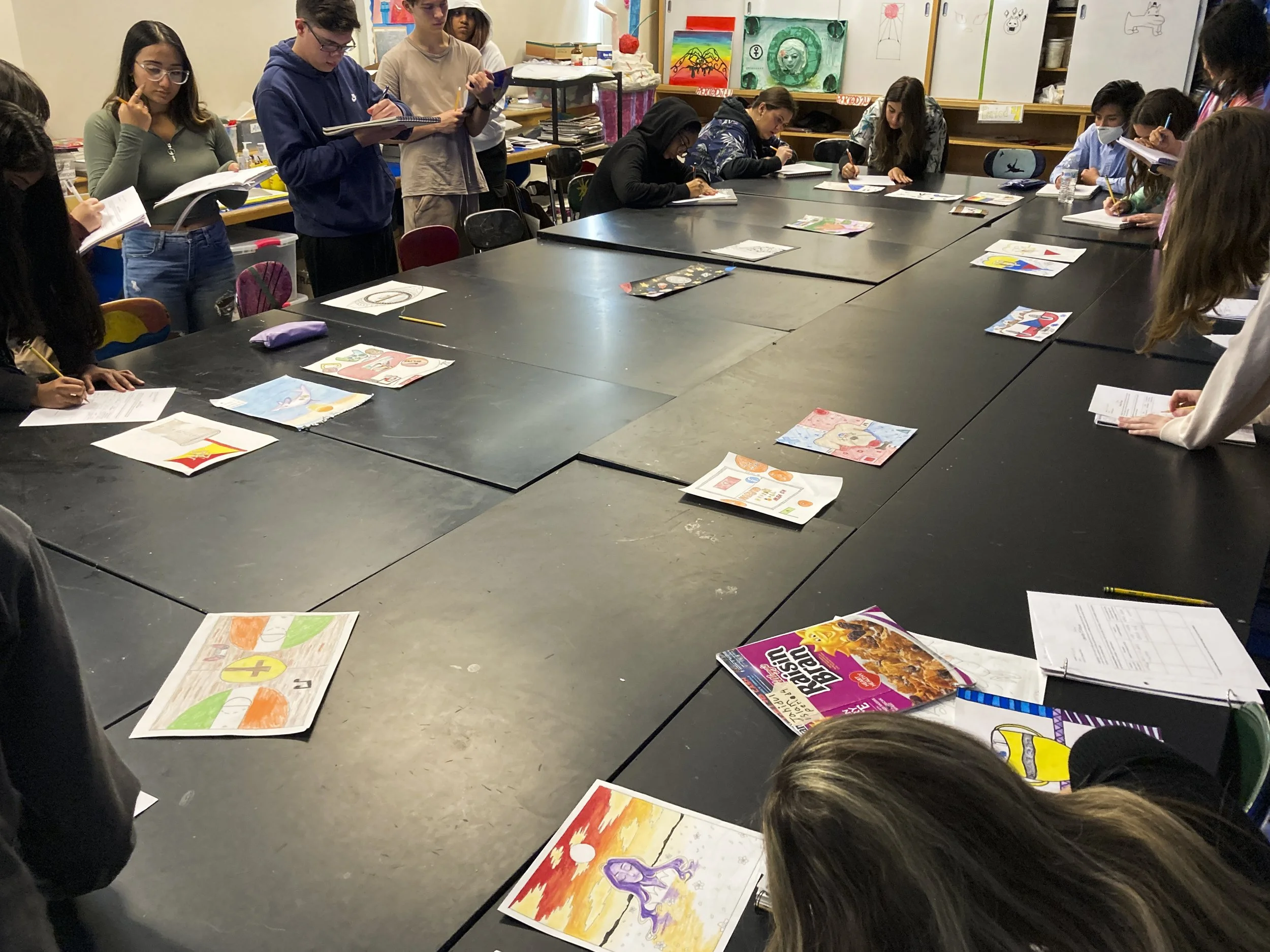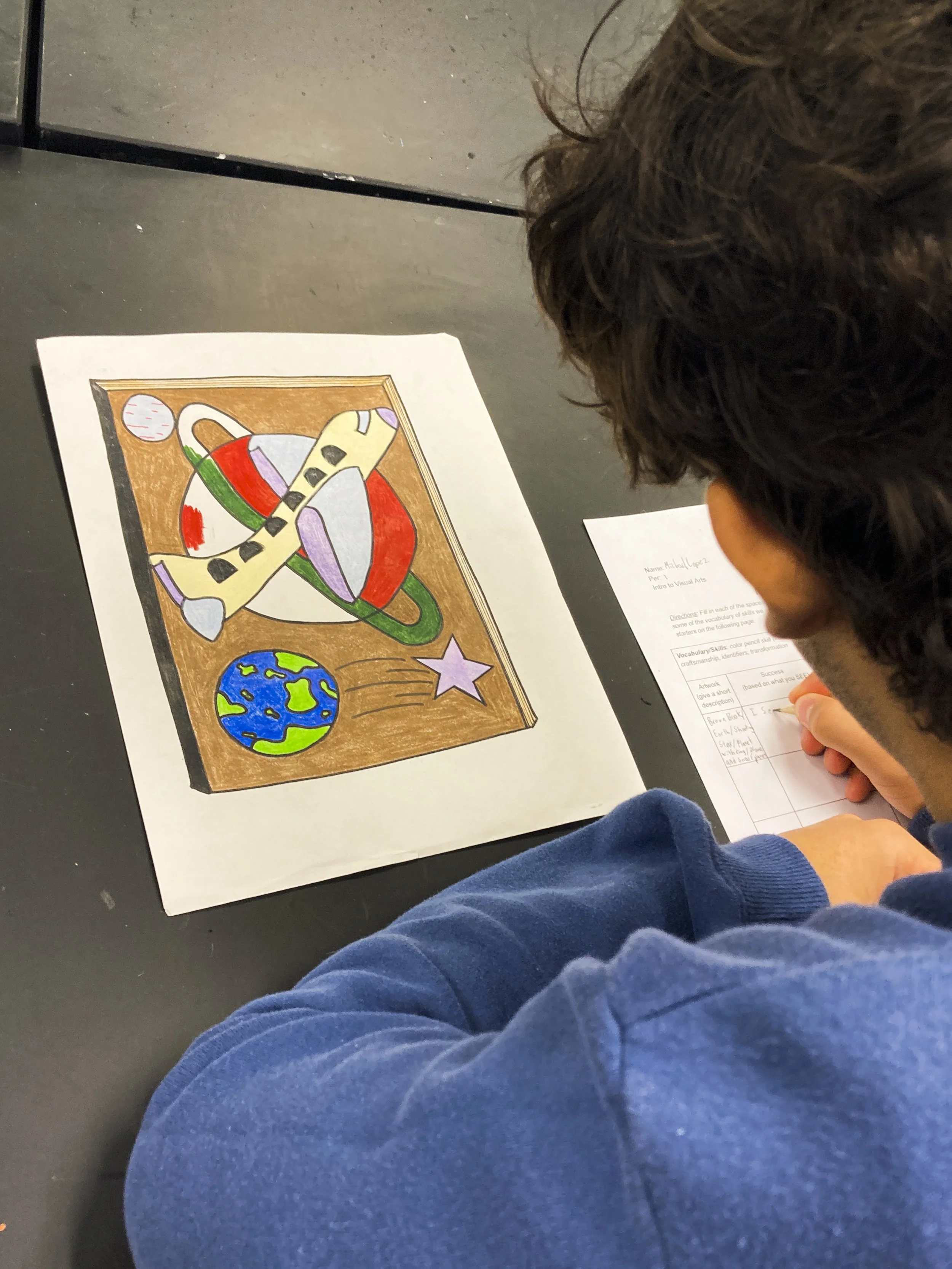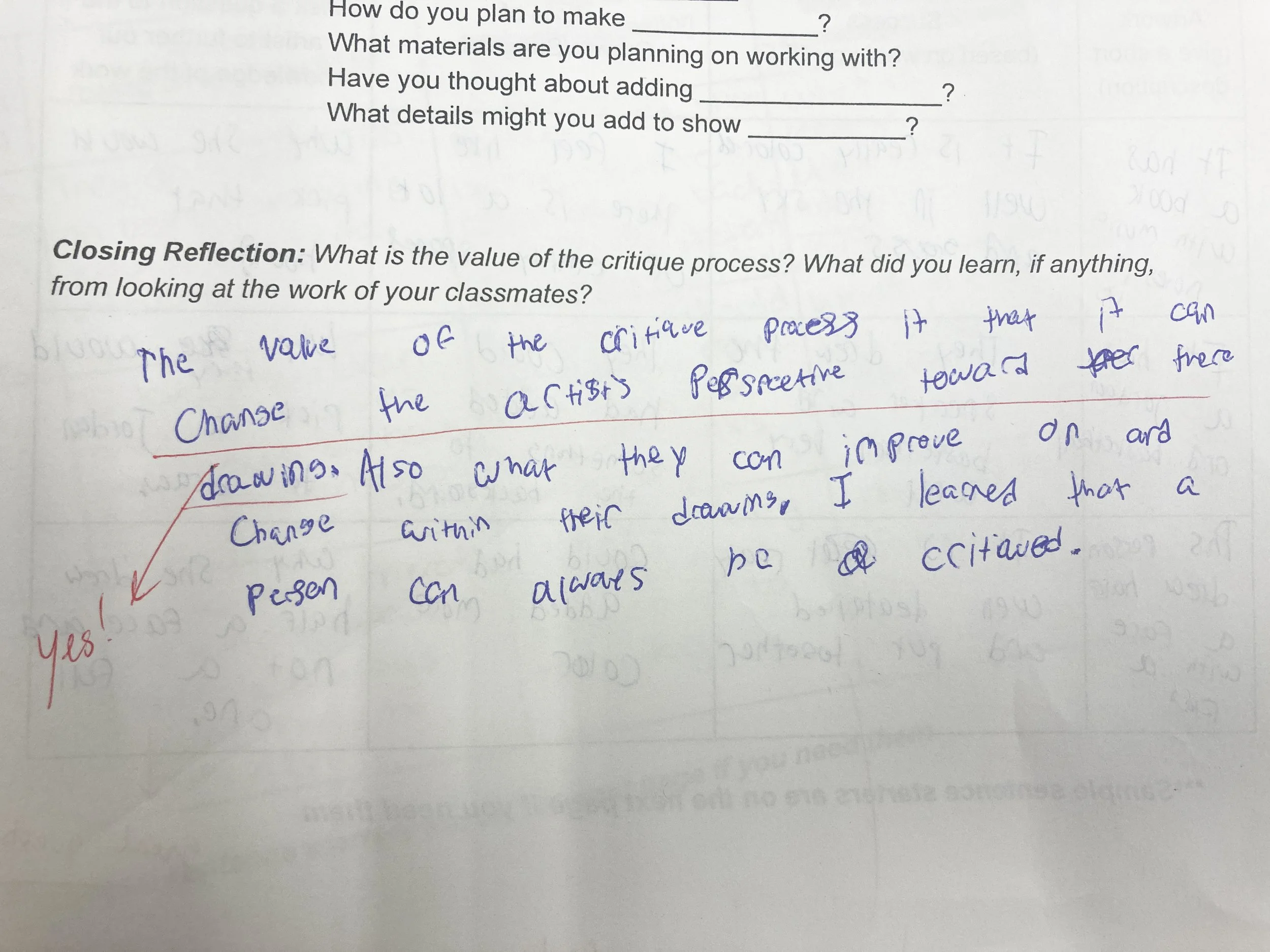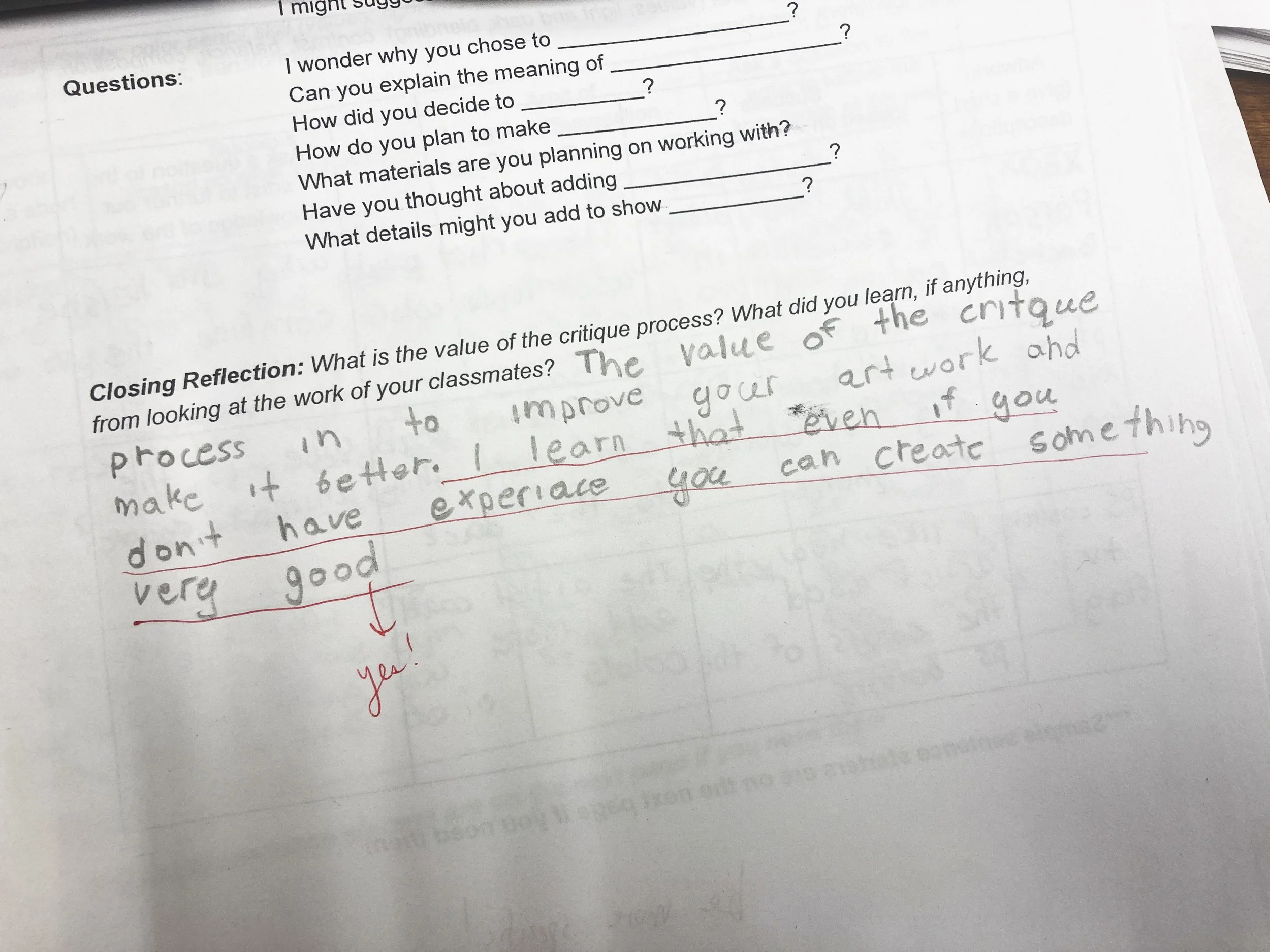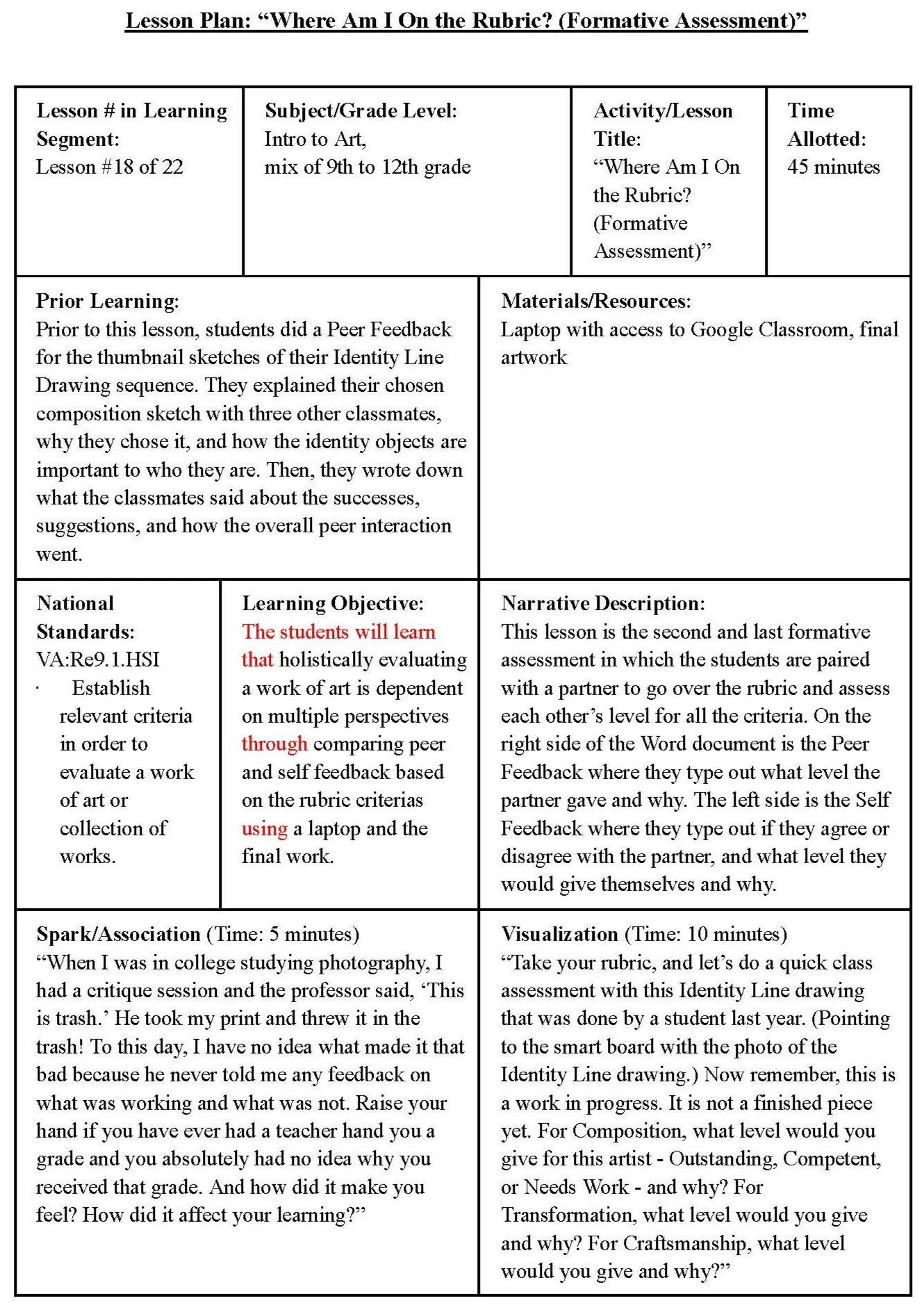Identity Portrait Drawing
General Art (9 th to 12 th Grade)
Final Artwork
Umbrella Objective:
The students will learn that they can explore, discover, and express their identity through drawing characteristics and qualities that express who they are using pencil, eraser, and color pencils.Lesson Sequence:
Part 1 — Challenging Bias
After watching Chimamanda Ngozi Adichie's TedTalk, "The danger of a single story," students will learn that there can be a difference in how people perceive them versus how they see themselves through making list of qualities on a Challenging Bias venn diagram using a sketchbook, pencil, and eraser. Part 2 — Identity Mapping
The students will learn that who they are is a narrative that is described in many ways (emotions, temperament, objects, relationships, hobbies, likes/dislikes, etc.) through brainstorming qualities that make them unique in their Identity Mind Map using a sketchbook, pencil, and eraser. Part 3 — Line Exercises
The students will learn that they can create a variety of line designs (geometric, organic, line weight, etc.) through experimenting with different pressure, angle, width, and length of the pencil marks using a sketchbook, pencil, and eraser. Part 4 — Graffiti & Letters
The students will learn that they can create different types of typography with lines through experimenting bubble, graffiti, and make your own letters using a sketchbook, pencil, and eraser. Part 5 — Composition & Thumbnail Sketches
The students will learn that specific placement of each element in the entire artwork creates a composition through making several thumbnail sketches of different arrangements of a line, two circles, and a triangle using a sketchbook, pencil, and eraser. Then, they drew thumbnail sketches of different arrangements for the final artwork. Part 6 — Final Sketch
The students will learn that working on a final sketch before starting the artwork helps them add, subtract, and troubleshoot ideas and details through creating their final sketch using a sketchbook, pencil, and eraser. Part 7 — Peer to Peer Feedback
The students will learn that peers and fellow artists can see their artwork in a different perspective and give feedback that can help them make the artwork express their idea more clearly through having a paired peer to peer feedback session using a rubric, laptop, pencil, and eraser. Part 8 — Final Artwork
The students will learn that they can explore, discover, and express their identity through drawing characteristics and qualities that express who they are using pencil, eraser, and color pencils.Part 9 — Critique & Reflection
The students will learn that critique provides them with space to reflect on their progress, celebrate their successes, and receive feedback to further better their artistic execution through viewing all classmate's artwork together, learning how to discuss their and someone else's artwork, and writing reflection answers to the final assessment using the assessment form, pencil, and eraser. Process
Lesson Plan
Critique & Reflection
FORMATIVE ASSESSMENT
“Where Am I On the Rubric?”
Rubric students used in class










































